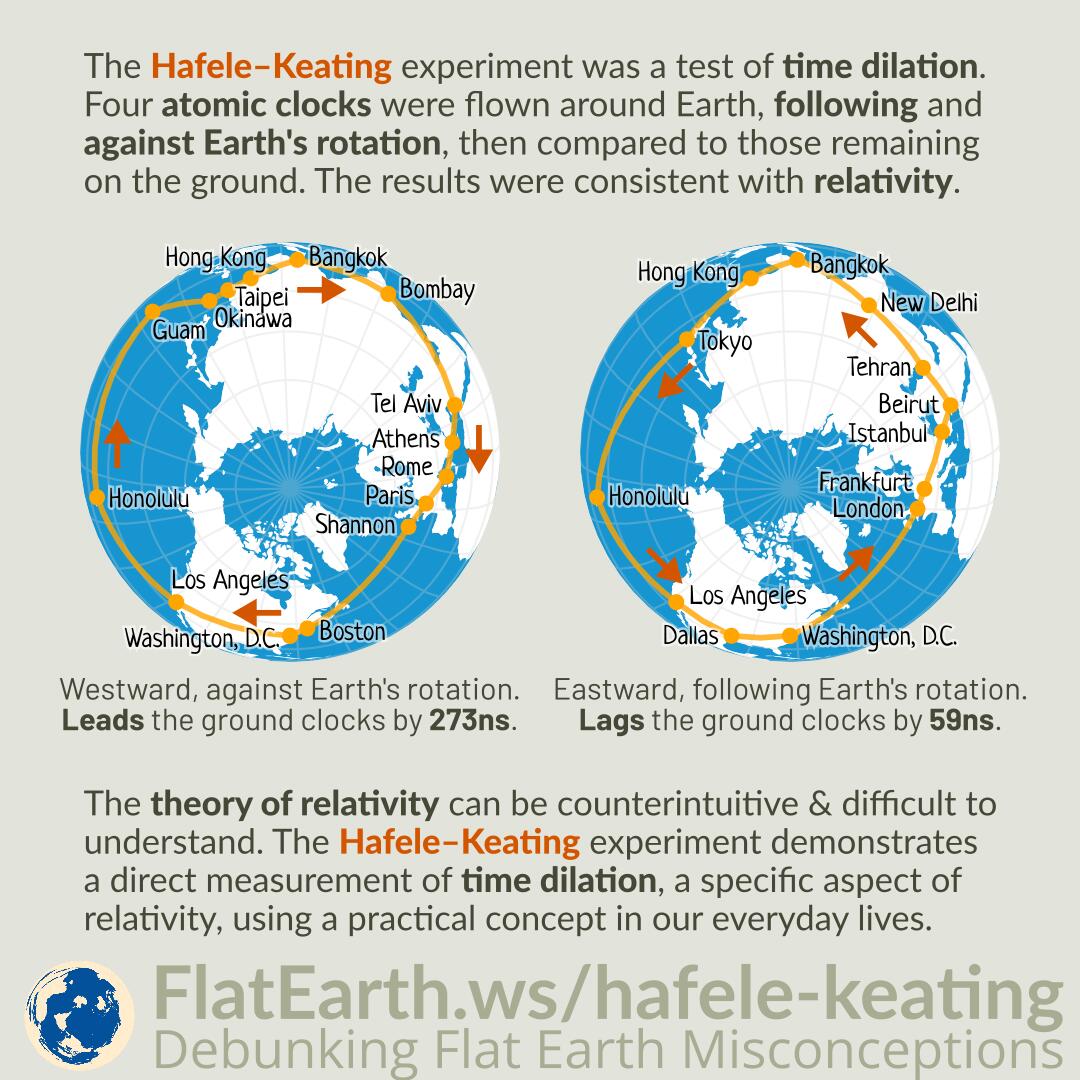The Hafele–Keating experiment was a test of time dilation. Four atomic clocks were flown around Earth, following and against Earth’s rotation, then compared to those remaining on the ground. The results were consistent with relativity.
The theory of relativity can be counterintuitive & difficult to understand. The Hafele–Keating experiment demonstrates a direct measurement of time dilation, a specific aspect of relativity, using a practical concept in our everyday lives.




